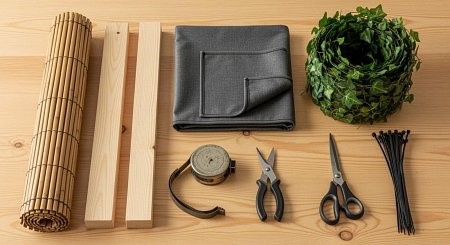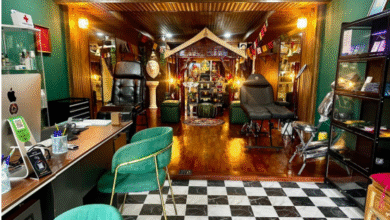DIY Balcony Privacy Screen Guide: Easy & Affordable Solutions
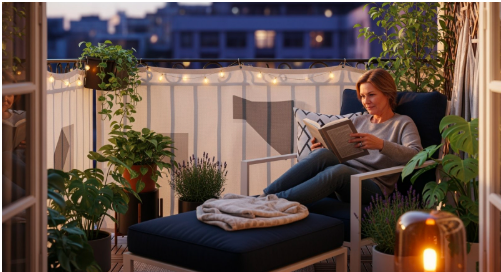
Turning your balcony into a private and comfortable spot is completely possible with a do-it-yourself approach. If your outdoor area feels a bit too visible to neighbors or people passing by, a balcony privacy screen can help you enjoy a more relaxing and personal space.
Whether you’re handy with tools or just getting started, there are many simple and affordable ways to make your balcony feel like your own getaway. This guide covers everything from planning and choosing materials to putting your privacy screen together and decorating it, so your balcony can become the peaceful area you want.
One great thing about DIY is how flexible and budget-friendly it is. You can make your privacy screen to fit your style, budget, and the needs of your specific balcony. There are plenty of ideas, from vertical gardens to fabric panels.
Let’s go through easy ways to make a screen that gives you privacy and also makes your balcony look better and work for your lifestyle.
Why Make Your Own Balcony Privacy Screen?
Even a small balcony is valuable extra space at home-a place to step outside for some fresh air. But if you’re always in view, it won’t feel relaxing. That’s where a DIY privacy screen comes in, offering much more than just blocking sights.
Makes Your Space More Comfortable and Private
The main reason people want a privacy screen is for privacy. Imagine enjoying coffee or reading outside without feeling watched. A screen blocks the view, instantly making your balcony cozier. It turns an open area into a more private “room,” so you can use your space fully, whether you’re hosting friends, exercising, or just relaxing without worry.
Adds Style and Usefulness
Privacy screens don’t just block views-they can also give your balcony a stylish new look. Whether it’s a lush plant wall, flowing curtains, or a wooden panel, a screen adds personality and charm. You can use a screen to hang lights or small decorations, making your outdoor space even more inviting.
Shields You from Wind, Sun, and Noise
Depending on what you choose, a privacy screen can help block wind, create shade, and even lower some outside noise. A strong or tightly woven screen can protect you from breezes, keep out harsh sunlight, and help your balcony stay quiet and comfortable. A good screen lets you use your balcony comfortably much more often, through all kinds of weather.
Things to Think About Before You Start
Before you get started, planning is important. Thinking ahead will help your project go smoothly and help you avoid mistakes or breaking any rental rules.
Balcony Size and Shape
Start by measuring your balcony carefully-length, height, and any railings or posts in the way. These measurements will decide what kind of screen and how much material you’ll need.
Building or Rental Rules
Check your lease or building rules before you begin, especially if you’re renting or part of a homeowners’ association. There may be limits on what you can attach or the materials you can use. Some buildings only allow screens that aren’t permanently attached or that don’t require drilling.
Picking Materials That Last Outdoors
Your privacy screen needs to withstand rain, sun, and wind. Look for materials like treated wood, UV-protected fabrics, bamboo, or weatherproof plastic. Avoid materials that will rot, fade, or become brittle quickly, and think about how your materials will age over time.
Budget
Set a budget before you start shopping. Cheap options like pallets may be available for free, while fake greenery or special outdoor fabrics can cost more. Remember to include any fasteners or tools you might need in your budget.
| Material | Estimate Cost | Durability | Maintenance |
| Fabric Panels | Low-Medium | Medium | Easy to clean, may fade |
| Bamboo/Reed/Wood | Low-Medium | Medium | Needs weatherproofing |
| Artificial Greenery | Medium-High | High | Low maintenance |
| Pallets | Free-Low | Variable | Sanding/painting needed |
Popular DIY Balcony Privacy Screen Ideas
There’s no shortage of methods you can use to add privacy to your balcony, from soft curtains to wooden panels. Here are some standout approaches:
Fabric Panels and Curtains
Weather-resistant fabric screens are affordable, easy to install, and come in many colors. Use grommets (eyelets) on the fabric edges and run zip ties or rope through them to fasten to your railing. Curtains can go up on an outdoor tension rod between posts or walls, which is especially helpful for renters. Tiebacks or weights can keep them secure during wind.
Plants and Vertical Gardens
Plants give you privacy and a green look. Use tall planters with bamboo, grasses, or dense shrubs. Climbing plants like ivy can cover a trellis, while hanging or wall-mounted planters save floor space. Green screens require regular watering but improve your balcony’s air and offer extra shade and sound reduction.
Bamboo or Reed Fencing
Bamboo, reed, or willow fencing comes in rolls that attach easily with zip ties or wire. Cut to size, these natural screens look great but may wear out after a couple of years, especially if exposed to heavy weather.
Wooden Lattice and Slatted Panels
Lattice panels are classic and let in light and air. You can attach them with brackets, zip ties, or make a free-standing frame. Vinyl lattice needs less work than wood and lasts longer outside. You can paint or stain wood for your color scheme.
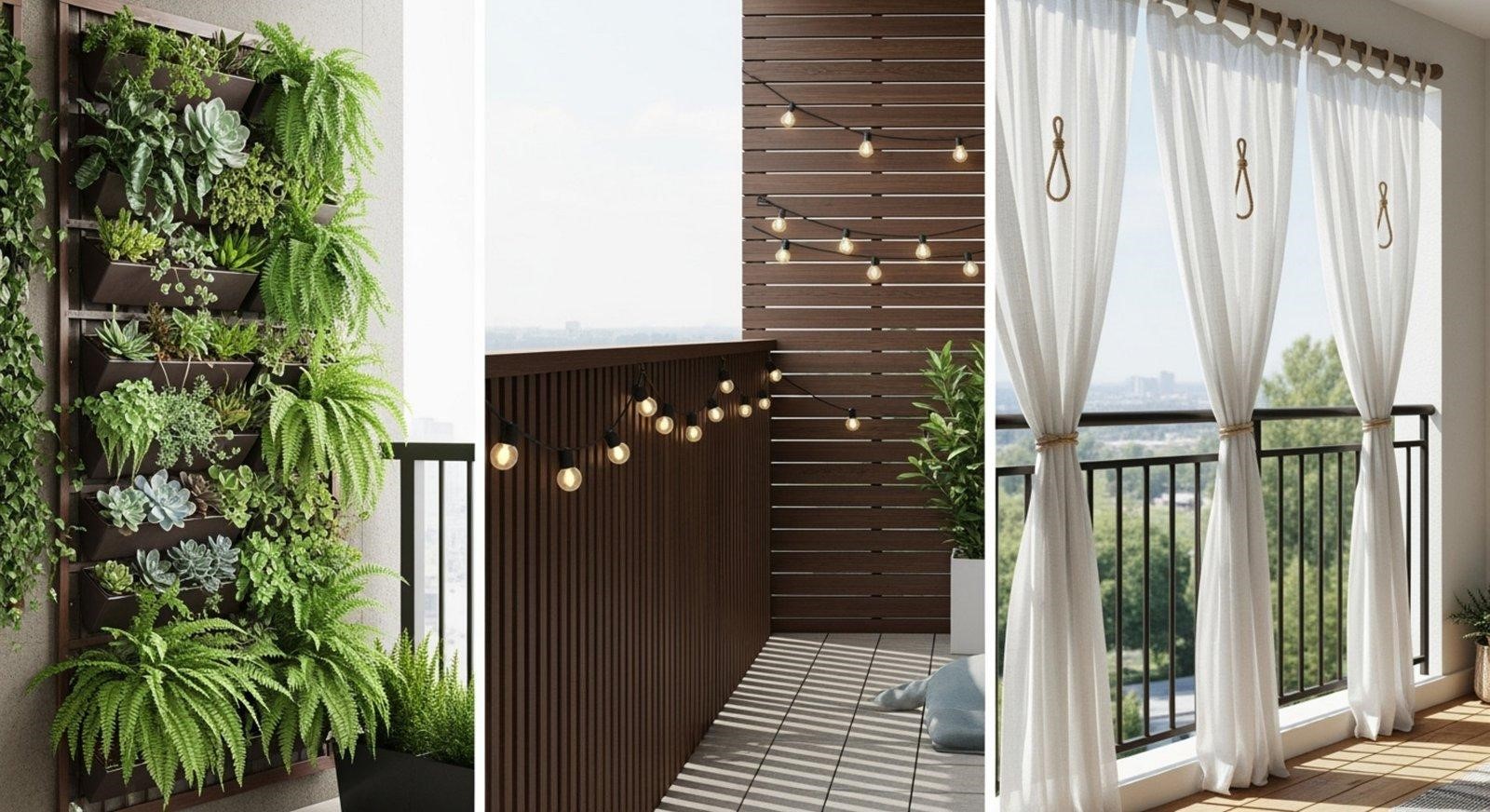
Upcycled Pallets
Pallets are often free and make a tough, rustic screen. Make sure to use untreated or heat-treated wood. Clean and sand them first. Stand pallets up and tie, screw, or bracket them to the railing. Pallet slats can also hold small plants or decorations.
Fake Green Walls
If you want privacy with no plant care, snap-together artificial hedges or faux ivy are a quick fix. Look for UV-rated versions to avoid fading. Use lots of zip ties to keep them in place, and layer them over mesh if you want more coverage.
Freestanding Screens and Portable Panels
If you can’t drill or want a movable solution, folding screens and standing panels are great. They come in wood, bamboo, or resin and can be set up or moved anytime.
| Type | Ideal For | Skills Needed | Pros | Cons |
| Fabric screen | Renters | Low | Flexible, cheap | Wind can affect |
| Greenery | Garden lovers | Medium | Looks great, natural | Needs care |
| Lattice/Pallets | DIY fans | Medium-High | Custom look | Heavier work |
| Faux green wall | No-maintenance | Low | Always green | Can look fake up close |
Step-by-Step: Build Your Balcony Privacy Screen
- Measure Your Area: Double-check all measurements, making space for railings and any tricky corners.
- Choose & Gather Materials: Pick your screen type and get everything ready before starting-main materials, fasteners, tools, safety gear.
- Attach Carefully: Wear gloves and protect your eyes if needed. Attach your screen at several points (top, bottom, sides) to avoid sagging or flapping in wind.
- Check for Drainage: Make sure water can escape the balcony floor freely, and that your screen isn’t blocking these routes.
- Personalize: After installing, paint or stain wood, add lights, planters, or any extras that reflect your style.
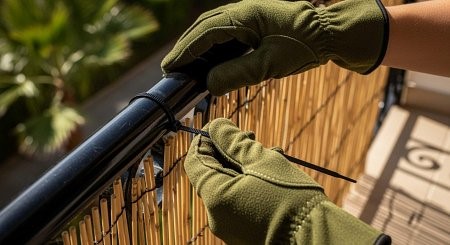
Tips for a Strong, Lasting Installation
- Attach your screen in multiple places to keep it stable in wind.
- Don’t drill unless you have permission. Use zip ties, tension rods, or freestanding screens for no-damage solutions.
- Use weatherproof materials and finishes for wood and fabric. UV-resistant zip ties and stainless screws last longest.
- Inspect fasteners each season and replace any that are wearing out.
Ideas to Decorate Your Privacy Screen
- Hang outdoor string lights along your screen for a cozy nighttime look.
- Add hooks for hanging planters, lanterns, or small shelves on wood or lattice screens.
- Choose colors that match your balcony furniture and decor. An outdoor rug can help tie the look together.
Maintaining Your Privacy Screen
- Cleaning: Wash fabrics with mild soap and let them dry completely. Wipe down bamboo, wood, or artificial leaves as needed.
- Check for Repairs: Look for signs of rust, loose ties, or fading and fix small problems quickly to avoid bigger ones.
- Seasonal Storage: In rough winters, take down lightweight or delicate screens and store them somewhere dry.
FAQs: DIY Balcony Privacy Screens
Which materials last longest outside?
Vinyl, pressure-treated wood, and good outdoor fabrics are the best for long-lasting use outdoors. Faux greenery labeled UV-resistant can also last for many seasons.
Can renters use privacy screens?
Yes! Use zip ties, tension rods, or freestanding panels. These methods don’t damage railings or walls and can be easily removed.
Are DIY screens safe in the wind?
They can be, if they’re attached with enough fasteners. Avoid loose materials. For windy areas, slatted or open designs help reduce wind force.
How can I block the view but keep light?
Use materials that let light through, like lattice, slats, or sheer outdoor curtains. Plants like bamboo can also provide privacy while letting some light in.
With a little planning, the right materials, and careful installation, your DIY balcony privacy screen can give you the comfort and freedom to enjoy your outdoor space any time.
